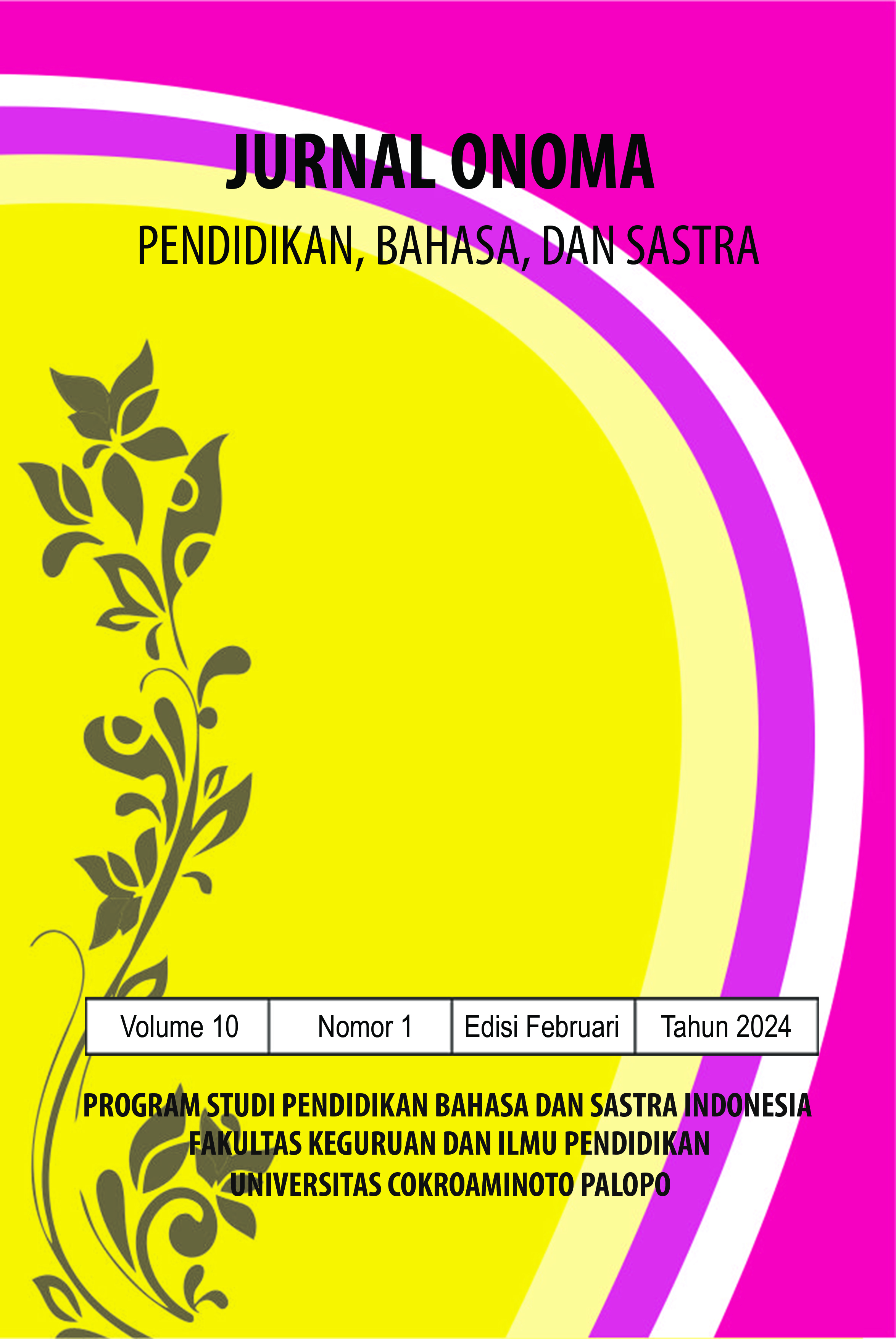Improving the quality of life of the community through the regional literacy movement
https://doi.org/10.30605/onoma.v10i1.3330
Keywords:
quality of life, literacy movement, communityAbstract
This study investigates the relationship between the literacy movement and the quality of human life with the main aim to improve the quality of life of local communities through literacy programs initiated by local governments. Local governments must have regional regulations that regulate the implementation of education based on regional literacy movements to provide guidelines to the community in carrying out activities to improve the quality of life and welfare of local communities. This research was conducted using the literature review method with data on literacy movements that have been carried out in areas published in national journals. Improving the quality of life of the community can be done by measuring CLDI (Community Literacy Development Index) by involving two components, namely: the Community Literacy Building Element (CLBE) component and the Community Aspect (CA) component. The study found that there is a correlation between the results of good CLDI measurements and the improved quality of life of the community. Good CLDI results were obtained through regional literacy movements carried out massively in local government institutions, including: Library and Archives Office, Education and Culture Office, Community and Village Empowerment Office.
Downloads
References
Ameliah, R., Adi Hegara, R., Rahmawati, I., &; et al. (2021). Status of Digital Literacy in Indonesia Executive Summary. Indonesia Digital Literacy Index, 9. https://katadata.co.id/StatusLiterasiDigital
Coal, H. H., &; Ariani, D. N. (2018). Implementation of the School Literacy Movement Program in Miai River Cluster Public Elementary School Banjarmasin. Journal of Primary School Education, 4(1), 15. https://doi.org/10.30870/jpsd.v4i1.2965 DOI: https://doi.org/10.30870/jpsd.v4i1.2965
Dewayani, S., Retnaningdyah, P., Antoro, B., Susanto, D., Ikhwanudin, T., Fianto, F., Muldian, W., Syukur, Y., &; Setiakarnawijaya, Y. (2021). Guide to Strengthening Literacy and Numeracy in Elementary Schools. http://repositori.kemdikbud.go.id/22599/1/Panduan_Penguatan_Literasi_dan_Numerasi_di_Sekolah_bf1426239f.pdf
Mulyo Teguh. (2017). Actualization of the 2013 Curriculum in Elementary Schools through the School Literacy Movement to prepare a superior and ethical generation. Proceedings of the National Seminar , 18–26.
Oktavianti, L. (2022). Jombang Regency in 2022 figures. Jombang Regency In Figures 2022, 614.
Perpusnas. (2022). Community Literacy Development Index 2022. 1, 62–251.
R.D. Kurniawati. (2018). Implementation of the school literacy movement (GLS) at SMPLB-B YPTB Malang [Univ. State Malang, Indonesia]. http://repository.um.ac.id/id/eprint/9038
ROhman, S. (2017). Building a culture of reading in children through the school literacy movement program. Journal of Basic Education and Learning, 4(1), 156–160.
Suparman, S., & Charmilasari, C. (2017). Analysis of Phase Structure Realization in Classroom Discourse: A Study of Systemic Functional Linguistics. Ethical Lingua: Journal of Language Teaching and Literature, 4(2), 120-126. DOI: https://doi.org/10.30605/ethicallingua.v4i2.624
Rosa, I., &; Listiadi, A. (2020). and self-control on personal financial management Effects of financial literacy , financial education on family, peers, and self control on personal financial management. Journal of Management, 12(2), 244–252.
Silvia, O. W., &; Djuanda, D. (2017). Literature Based Model in School Literacy Movement Program. Literature-Based Model in School Literacy Movement Program, 4(2), 160–171. https://doi.org/10.23819/mimbar-sd.v4i2.7799 DOI: https://doi.org/10.53400/mimbar-sd.v4i2.7799
Wiedarti, D. (2018). Master Design of the School Literacy Movement (2nd Edition). In Journal of Basic Education (Vol. 1, Issue 2). https://training.unmuhkupang.ac.id/index.php/jpdf/article/view/217
Yuliyanti, A., Effendy, U., &; Yosef, Y. (2018). School Literacy Movement in SD Negeri 157 Palembang. Journal of Elementary School Innovation, 38–45. https://ejournal.unsri.ac.id/index.php/jisd/article/view/8257%0Ahttps://ejournal.unsri.ac.id/index.php/jisd/article/viewFile/8257/4293
Yunianika, I. T., & . S. (2019). Implementation of School Literacy Movement in Dharma Karya Elementary School, Open University. Primary School Scientific Journal, 3(4), 507. https://doi.org/10.23887/jisd.v3i4.17331 DOI: https://doi.org/10.23887/jisd.v3i4.17331
Downloads
Published
How to Cite
License
In submitting the manuscript to the journal, the authors certify that:
- They are authorized by their co-authors to enter into these arrangements.
- The work described has not been formally published before, except in the form of an abstract or as part of a published lecture, review, thesis, or overlay journal.
- That it is not under consideration for publication elsewhere,
- That its publication has been approved by all the author(s) and by the responsible authorities – tacitly or explicitly – of the institutes where the work has been carried out.
- They secure the right to reproduce any material that has already been published or copyrighted elsewhere.
- They agree to the following license and copyright agreement.
License and Copyright Agreement
Authors who publish with Onoma Journal: Education, Languages??, and Literature agree to the following terms:
- Authors retain copyright and grant the journal right of first publication with the work simultaneously licensed under Creative Commons Attribution License (CC BY 4.0) that allows others to share the work with an acknowledgment of the work's authorship and initial publication in this journal.
- Authors are able to enter into separate, additional contractual arrangements for the non-exclusive distribution of the journal's published version of the work (e.g., post it to an institutional repository or publish it in a book), with an acknowledgment of its initial publication in this journal.
- Authors are permitted and encouraged to post their work online (e.g., in institutional repositories or on their website) prior to and during the submission process, as it can lead to productive exchanges, as well as earlier and greater citation of published work.

















